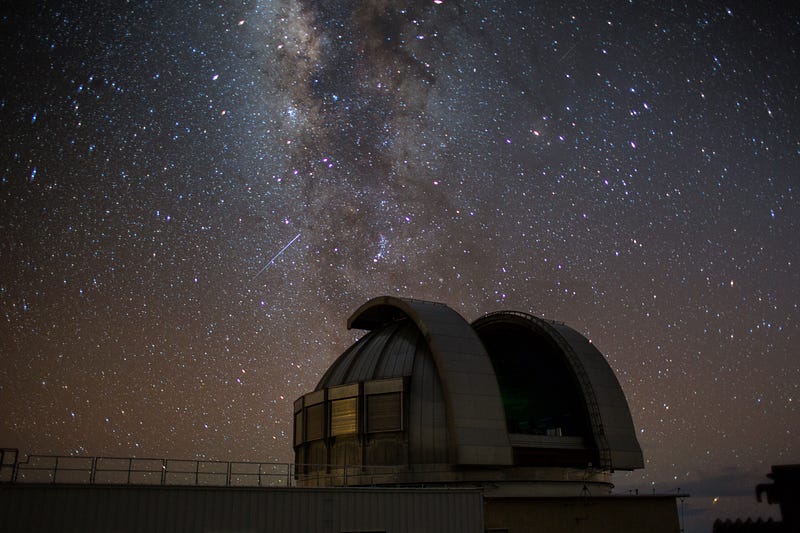Exploring the Cosmos: Time Travel Through Telescopes
Written on
Chapter 1: Understanding Telescopes
Telescopes are remarkable instruments that have transformed our understanding of the universe. The Hubble Space Telescope, for instance, has dedicated over 250,000 hours to examining the cosmos since its inception. The very first patent for a telescope was granted to Hans Lippershey in 1608, marking a pivotal moment in astronomical observation.
The Gran Telescopio Canarias (GTC) boasts a primary mirror measuring 10.4 meters in diameter. At their essence, telescopes are optical devices designed to gather and enhance light from celestial bodies. Their extraordinary ability to observe distant objects is rooted in their capacity to efficiently collect and focus light.
The larger the telescope—whether it features a sizeable lens or mirror—the more light it can harness. Captured light is then concentrated onto a single point using a lens or mirror, which brightens the resulting image. Additionally, telescopes employ various lenses or mirrors to magnify the image, enabling us to discern fine details of the observed objects. The magnified visuals are directed to a focal point, where an observer's eye or a camera can capture the celestial image.

Chapter 2: The Concept of Time Travel
Light travels at an approximate speed of 300,000 kilometers per second in a vacuum. The concept of "traveling back in time" through a telescope is a simplified way to understand how we observe distant celestial objects. When we look at an object that is far away, the light from that object takes time to reach Earth.
For instance, if we observe a star that is 100 light-years distant, the light we see today was emitted by that star a century ago. Thus, viewing that star through a telescope means we are seeing it as it was 100 years in the past. This illustrates a unique form of temporal exploration; if that star were to extinguish today, we would remain unaware of its fate for another century.
To further illustrate, consider Betelgeuse, which is around 700 light-years from Earth. Observing Betelgeuse today allows us to see the light that left it roughly 700 years ago, allowing us to glimpse an era when Europe was embroiled in the Hundred Years’ War.
The first video titled "Looking into the Past with Telescopes" delves into how telescopes allow us to observe ancient light, effectively enabling us to look back in time.
Chapter 3: The Role of Telescopes in Modern Science
Telescopes have played a crucial role in scientific advancements, facilitating the discovery of new planets, stars, galaxies, and other celestial entities. These observations have significantly broadened our understanding of the universe's size, age, and complexity, illustrating Earth's relative position among billions of other planets in the Milky Way galaxy and beyond.
Moreover, telescopes have enhanced our comprehension of cosmic history, from the Big Bang to the evolution of stars and galaxies. As modern telescopes become increasingly sophisticated, they are pivotal in searching for habitable exoplanets, investigating dark matter and dark energy, and unraveling the mysteries of the universe.
The second video titled "If the universe is only 14 billion years old, how can it be 92 billion light years wide?" explores the implications of cosmic measurements and the nature of the universe.
Final Thoughts
Telescopes serve as powerful gateways to the cosmos, allowing us to gather and amplify light from celestial objects. Their capacity to observe distant entities offers a unique form of time travel. As we look into the past through the light emitted from stars, we deepen our understanding of the universe's vastness and complexity.
So, did you know that this incredible tool offers a glimpse into time itself? Thank you for engaging with this exploration. See you in the next narrative!
Test Your Knowledge
Quiz: Telescopes Three Questions To Test Your Understanding!